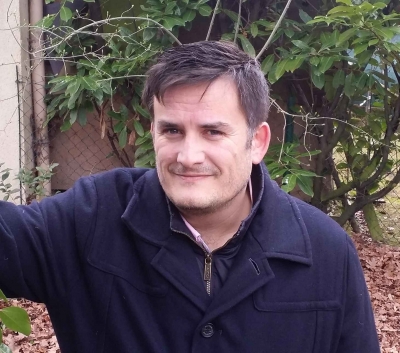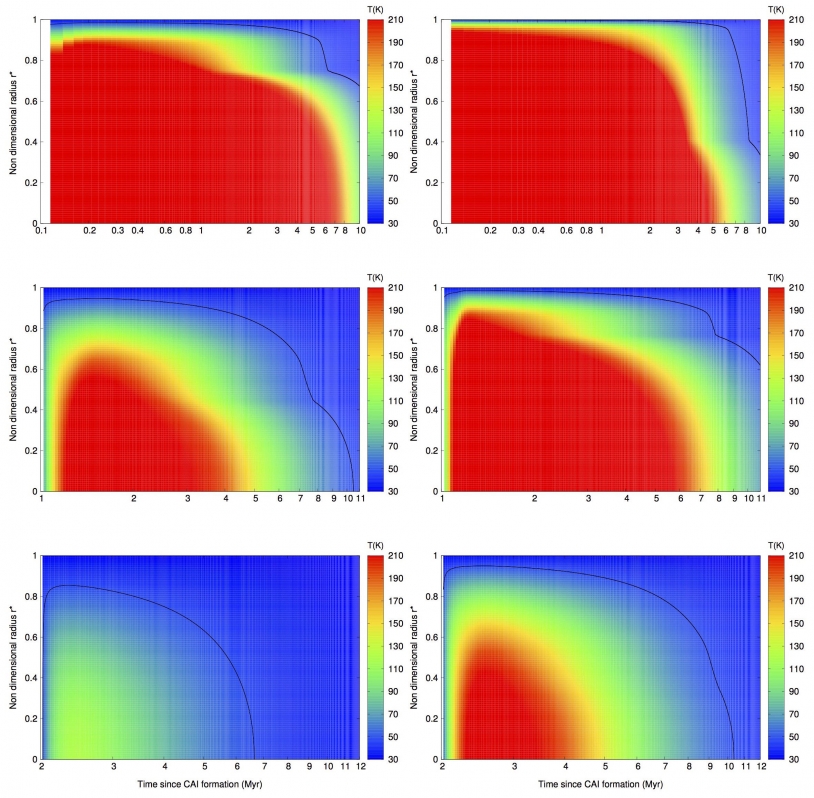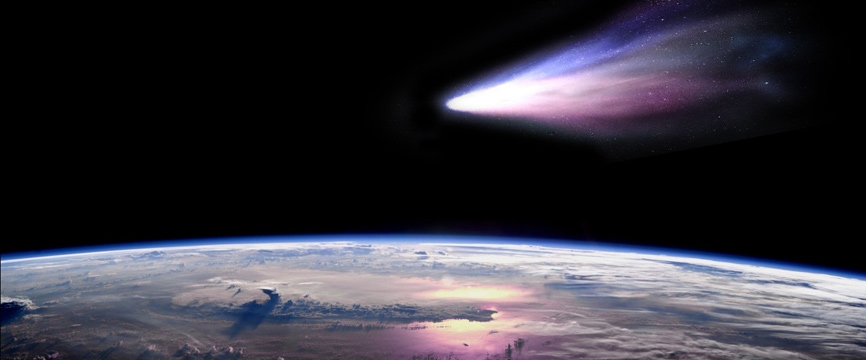Doubts cast on the prominent theory
Data from the ROSINA instrument was analysed for 2 years by an international research team led by astrophysicist Olivier Mousis (from the Laboratoire d’Astrophysique de Marseille or LAM) and supported by CNES. Their work resulted in two hypotheses which put in question the dominating theory of rapid comet accretion at the beginning of the protosolar nebula.
1/ The conditions in which comets appeared in the Solar System are still largely unknown. What new hypotheses do you bring to the table?
Olivier Mousis: Our work shows that it is impossible for 67P/Churyumov-Gerasimenko or its parent body to have formed quickly and to have retained volatile compounds such as the ones found in the comet’s coma. We offer 2 hypotheses. Either the comet (or its parent body) began to form at the same time as the protosolar nebula but underwent accretion at a slower rate than previously believed. Or, these objects’ accretion was as fast as we thought, but it began 2.2 to 7.7 million years after the appearance of the protosolar nebula, when it had had time to cool down.
2/ What sort of observations led you to these conclusions?
O.M.: It’s the first time mankind has managed to send a probe in orbit around a comet and measure from such close range what type of gases it emits. These gases (carbon monoxide, nitrogen, argon) are very volatile substances. They can only have been trapped in a solid state at very low temperatures, from 20 to 30 K (-253.15 to -243.15°C). But 67P/Churyumov-Gerasimenko, much like every comet that has been observed, isn’t a snowball as much as a dust ball. We know that radiogenic elements found on the comet, such as aluminium 26 or iron 60, emit heat when they disintegrate, as they do on earth. If this disintegration had occurred quickly after the comet was formed, the ice would have melted and the gases we observe today would have been long gone.
3/ How are your methods different from what’s been done before?
O.M.: 67P/Churyumov-Gerasimenko was most likely formed from the slow collision of 2 independently-formed bodies. The primary lobes were formed either by the condensation of small ice grains or from debris from a larger parent body. We ran simulation on the effects of radiogenic heating on the structure of frozen bodies of varying sizes, from 67P’s lobes (2.6 km long) to the Hale-Bopp comet (70 km). Until now, researchers had never accounted for the effects of radiogenic heating on comets’ chemical evolution.
4/ Do you have a preference for one of these 2 hypotheses?
No, but our results are clear: we have 2 hypotheses, and only a sample brought back from the comet could tell us which one is correct. But that’s a whole other story!

Olivier Mousis
© Olivier Mousis

From top to bottom: evolution through time of the temperature profile for a 2.6 km body made up of refractory dust and crystalline ice, with formation delays of 0, 1, and 2 million years after the appearance of the protosolar nebula
© Mousis et al.

What are comets?
Comets are small celestial bodies orbiting a star, like our very own Sun. They comprise a core made up of ice and dust.
As this core gets closer to the Sun (or the star it orbits), it emits gas and dust, which form the comet’s coma. The coma often extends into 2 bright streaks, called tails. These can reach a length of dozens of millions of kilometres and are also made up of gas and dust.
Article references
O. Mousis, A. Drouard, P. Vernazza, J. I. Lunine, M., Monnereau, R. Maggiolo, K. Altwegg, H. Balsiger, J.-J. Berthelier, G. Cessateur, J. De Keyser, S. A. Fuselier, S. Gasc, A. Korth, T. Le Deun, U. Mall, B. Marty, H. Rème, M. Rubin, C.-Y. Tzou, J. H. Waite, and P. Wurz, (2017), Impact of radiogenic heating on the formation conditions of comet 67P/Churyumov-Gerasimenko, The Astrophysical Journal Letters, 839:L4.
Contacts
- Olivier MOUSIS, Laboratoire d’Astrophysique de Marseille: olivier.mousis at lam.fr
- Francis ROCARD, Solar System Programme Manager at CNES: francis.rocard at cnes.fr
Further reading
The Rosetta mission.